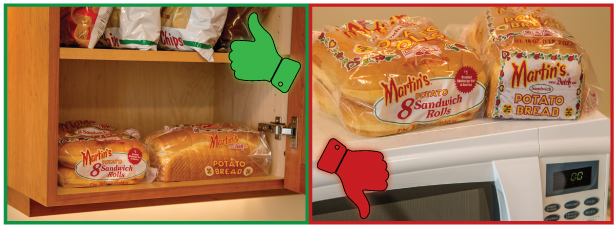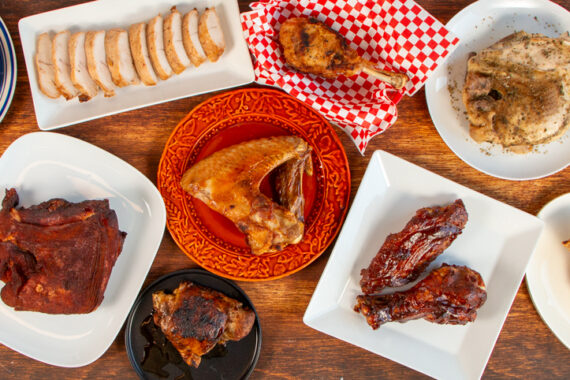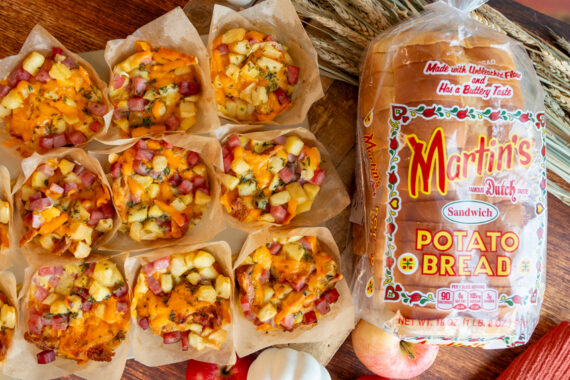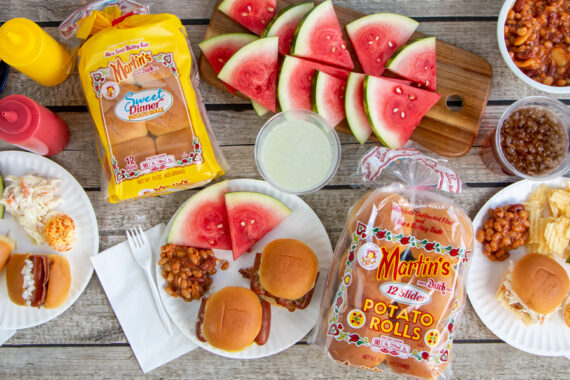
Are you wondering the best way to store bread or rolls to keep them as fresh as possible? Maybe you’ve heard conflicting advice from friends or the internet and want to clear up the confusion? We feel your pain; it’s always a shame to see delicious bread go to waste. And we want to make sure you get to enjoy your Martin’s® bread and rolls down to the last crumb.
We hope this expansive list of bread storage tips, or “do and don’ts,” will help to answer your questions. Our bread lasts a long time if stored properly, and we want you to enjoy yours as long as possible!
What is the Best Way to Store Bread?
The best way to store bread is at room temperature in a dark, dry, cool location such as a pantry, drawer, or bread box. We also recommend keeping our bread sealed in its original packaging, as this will help retain its moisture. If you no longer have the original packaging, try wrapping the bread in plastic wrap or aluminum foil.
Do not store bread on top of appliances that generate heat or emit light, such as microwaves or refrigerators. The heat from these appliances could cause the bread to dry out more quickly or cause condensation to build up inside the bag, causing the bread to mold.
Can I Store Bread in the Refrigerator?
We would not recommend storing bread in the refrigerator as this actually makes it go stale faster. The cold temperatures of the refrigerator draw out the moisture in bread and can make it stale up to three times faster, due to a process known as “retrogradation.”
Can I Freeze Bread?
Because of their high protein content, Martin’s® rolls and bread freeze very well. Freezing bread lowers the temperature enough to prevent bread from getting stale. This is a great alternative if you live in a high-humidity environment, or if you have extra product left over and it is nearing the best-by date.
Freeze the bread in its original packaging or wrapped in plastic freezer bags or heavy aluminum foil. When ready to use, be sure to thaw the product completely in the bag before opening it, so the moisture all gets reabsorbed into the bread.
What is the Best Way to Transport Bread?
When transporting your bread from the grocery store, it is best to keep it in a separate bag and on top of the other items in your cart. Our bread is very soft and can be easily squished. This rule also applies to storing your bread at home—do not stack other items (including others loaves) on top of your bread.
How Should I Store Bread During a Party or Event?
It is best to keep the bread sealed in its original packaging, or at least covered, until ready to serve. This prevents it from drying out too quickly.
How Should I Store Bread When Outdoors?
When eating outdoors, try not to let your bread sit under direct sunlight or intense heat. This can cause condensation to build up inside the bag, allowing it to get stale quicker or to mold. Try to keep your bread in the shade or in a dark, dry, cool location whenever possible.
How Can I Tell if My Bread is Still Good?
You can find the best-by date for each product on the packaging clip (or printed on the bag in the case of Potatobred Stuffing). Keep in mind that the product should last longer than that date if you practice the proper storing tips mentioned above.
What Should I Do With Stale Bread?
Don’t throw it away! Check out these great ways to use up leftover or stale bread.
Recap: Bread Storage Tips – Dos and Don’ts
|
DO: |
DON’T: |
| Store in a dark, dry, cool location | Store on top of appliances that generate heat |
| Keep wrapped in its original packaging | Store in the refrigerator |
| Store in freezer to extend shelf life | Stack other items on top of bread |
| Keep covered or sealed in packaging | Keep out in the open air |
| Look for the best-by date on the package | Let sit under direct sunlight or intense heat |
| Repurpose stale bread with creative recipes | Throw out stale bread |
Sources:
https://www.wikihow.com/Store-Bread
https://www.thespruce.com/bread-storage-options-1908308
Our latest content, delivered straight to your inbox.
Be the first to hear about our newest recipes, tips, and company updates!






